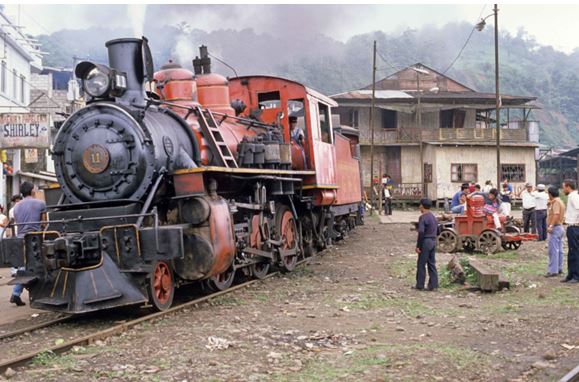Rich Thom will present a “Two-Fer,” beginning with a brief description of a method he tried on his layout, “Coloring Scenery Using Alcohol-Based Solutions,” followed by the main program:
RAILS TO THE TOP OF THE WORLD Appropriate to the season, we’ll begin this journey to South America in Cuenca, Ecuador, where each Christmas Eve the children of this Andean city dazzle in the Pase del Nino—procession of the Baby Jesus. Cuenca is charming enough on its own account, but for rail enthusiasts getting there on the Cuenca Branch of the Guayaquil & Quito Railway was the real attraction: a 2-6-0 steam loco which emerged from Baldwin’s shops in 1900 was usually up front. We’ll look at the G & Q’s assault on the Andes—with gradients up to 5.6%–and the railroad’s entirely-American equipment and operations. But higher summits of the Andes were found further south in new destinations not previously shown at SV&W clinics. The best-known crossing of the mountain range was by the Central Railway of Peru, another American-built railroad which climbed from sea level near Lima to 15,694 feet at Galera in just 108 miles. For decades it was credited to be the highest railway in the world—but in fact wasn’t. It was the highest standard-gauge one, but you had to go south to the Bolivian Altiplano for the truly highest: the Potosi Branch of the Bolivian National Railways reached no less than 15,705 feet at a lonely, windswept and cold spot called Condor. The track gauge was one meter, though, and the remote branch was far more difficult to reach as well, and simply didn’t get the press of Peru’s summit. Your presenter convinced his wife that this was a “must do,” and after reaching Condor together in 1978, she never let him forget the journey, as only wives can.

This is an in-person clinic. December 13th @7PM, at the Oak Harbor Senior Center at 51 SE Jerome St, Oak Harbor, WA 98277.

No Comments Yet